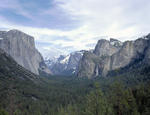This initiative is a positive step forward in promoting pollinator conservation and restoration on federal lands across the country and addressing international collaborations to conserve such pollinators as monarch butterflies and bats.
Responsibility is widespread across federal agencies, with emphasis on scientific research, education and outreach, best land-use management practices, enhancing pollinator habitats, establishing a reserve of native seed mixes (including pollinator-friendly plants), partnerships, and assisting state wildlife organizations in establishing plans to aid in pollinator conservation.
The National Park Service is not only the interagency co-lead for the effort, but has also established a new pollinator education and outreach team to help educate and engage diverse audiences. The NPS has also been actively engaged in developing best management practices for land use in regard to maintaining pollinator health, in addressing restrictions on pesticide use, and in participating in pollinator-related partnerships and meetings, such as the North American Pollinator Protection Campaign and the Monarch Joint Venture.
As we plan, cook, and gather together for Thanksgiving this year, perhaps we can take a moment to offer gratitude to pollinators which make sure that plants can successfully reproduce by moving pollen and seeds from one plant to another. We have them to thank for more than 90 percent of Earth’s flowering plants and one third of human food crops.
Times are tough for bees, butterflies, birds, bats and other pollinators, though, due to loss of habitat, pesticide use, diseases, and other stressors. The NPS is currently reviewing practices which will lead to conservation and enhanced education and outreach efforts.
In the meantime, check out the Service’s new pollinator subject site: http://www.nps.gov/pollinators
How you can help:
- If you live outside of a park, create your own backyard habitat for pollinators by leaving a small, undisturbed patch of bare ground for ground nesting bees or keeping a dead tree or limb undisturbed. You might also consider planting a pollinator-friendly garden, or choosing native plants that flower at different times throughout the season. The garden should exhibit a variety of colors and shapes to attract different types of pollinators. The North American Pollinator Protection Campaign website has free downloadable planting guides specific to your zip codes. If you live inside a park, know your park’s housing policies for planting species of any kind.
- If you live outside of a park, avoid or limit the use of pesticides. If a pesticide is necessary, chose one that is the lowest risk to bees and other non-target species, and apply in the evening when pollinators are not as active. If you live in park housing, know your park’s regulations concerning pesticide use of any kind.
- Spread the word. Stay tuned for additional pollinators articles on Inside NPS. Let your friends, neighbors, children, and family know that pollinators need our help—and in, turn, we need theirs.


